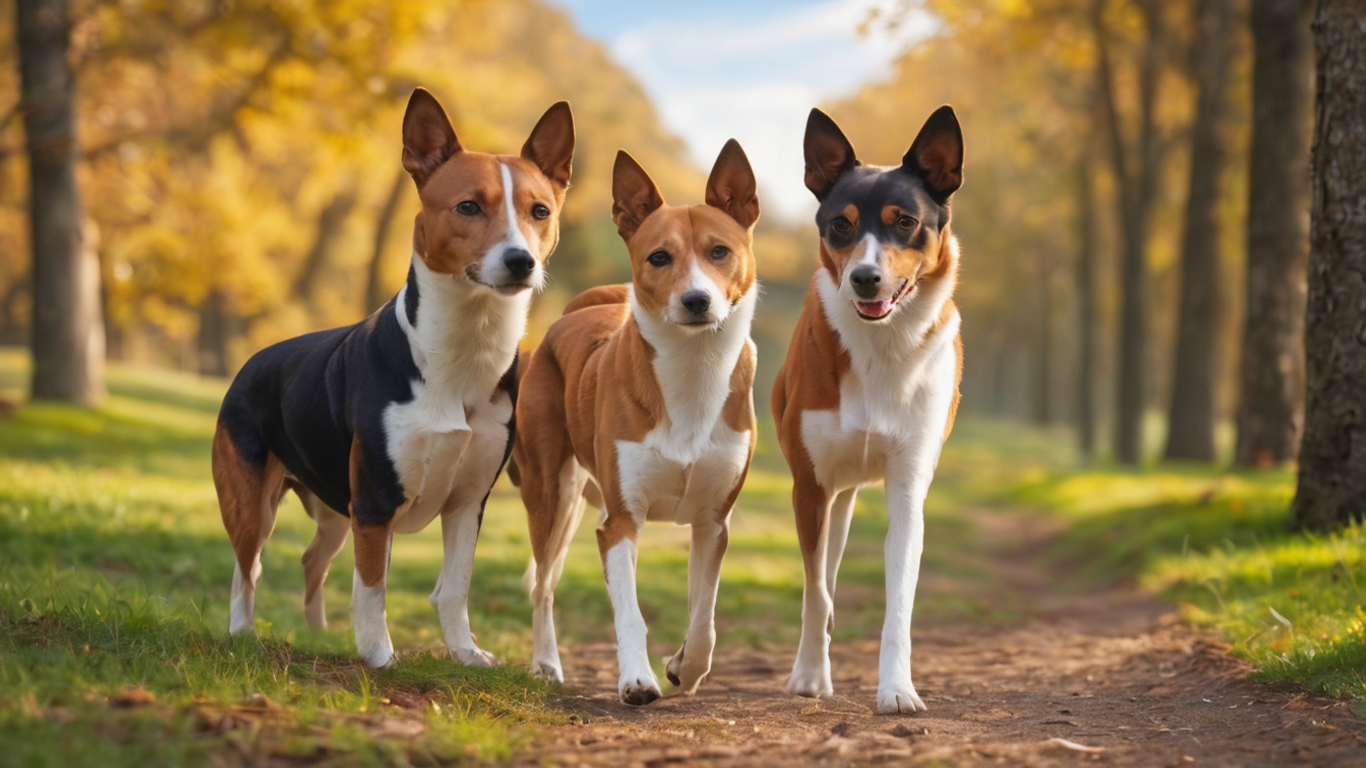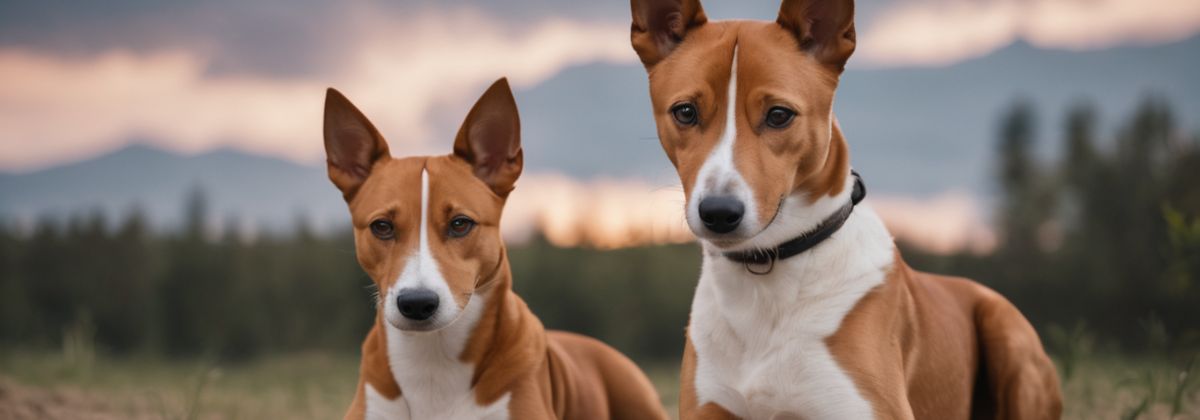16 Feb Basenji Dog: The Mystery Behind This Unique Breed
The Basenji dog, often dubbed the “barkless dog,” has intrigued dog enthusiasts for decades with its distinctive traits and rich history. In this blog post, we want to explore the origins, physical characteristics, temperament, health considerations, and much more, shedding light on what makes Basenjis truly special.The History and Origin of the Basenji Dog
The roots of the Basenji go back to ancient Africa, specifically the Congo region. These dogs were highly valued by local tribes for their exceptional hunting abilities and loyal companionship. The Basenji’s journey begins in the heart of the African continent, where they played a vital role in the daily lives of the people.
Basenjis were not merely hunting companions; they held cultural significance within African communities. Revered for their agility and silence during hunts, Basenjis became intertwined with rituals and ceremonies, solidifying their place as more than just working dogs but esteemed members of society.
The Basenji’s journey to the Western world unfolded in the early 20th century. Explorers and traders returning from Africa brought these unique dogs with them, introducing the breed to a global audience. The exotic allure of the Basenji captured the fascination of dog enthusiasts in the Western hemisphere.
As the Basenji gained popularity, it received recognition from kennel clubs, with the American Kennel Club officially acknowledging the breed in 1943. This formal recognition marked a significant milestone, solidifying the Basenji’s status as a distinct and noteworthy dog breed in the Western canine community.
In the modern era, Basenjis continue to captivate dog lovers worldwide. Their journey from the heart of Africa to homes around the globe is a testament to their enduring appeal. Understanding the origins and cultural history adds depth to the appreciation of this enigmatic and resilient breed.
Physical Characteristics of Basenjis
- Medium-Size: Basenjis are a medium-sized breed with a well-proportioned and athletic build. Also, their compact size, coupled with a graceful stance, showcases their agility and hunting prowess. Moreover, exploring their physical dimensions provides insight into the breed’s versatility.
- Coat and Colour: Basenjis boast a short and fine coat that lies close to their body, contributing to their sleek and elegant appearance.
- Facial Features: The Basenji’s expression is a visual delight, marked by a wrinkled forehead and an alert, intelligent gaze. Also, their small, pointed ears stand erect, adding to their attentive demeanour. The tightly curled tail, a hallmark of the breed, completes the Basenji’s distinctive appearance.
- Overall Aesthetic Appeal: The combination of these physical characteristics gives Basenjis a unique and captivating aesthetic that sets them apart. Also, appreciating their physical traits enhances the understanding of why Basenjis have become sought-after companions.
Temperament and Personality
- Independence and Intelligence: Basenjis are celebrated for their independent nature, a trait rooted in their history as hunters. Moreover, this independence is accompanied by remarkable intelligence, making them quick learners with a penchant for problem-solving. Navigating their distinctive temperament is key to building a harmonious relationship.
- Affectionate Bonds: While Basenjis may be independent, they form strong bonds with their human families. This section will explore the affectionate side of Basenjis, highlighting their loyalty and devotion to those they consider part of their pack.
- Socialisation and Interaction: Basenjis may be reserved around strangers, emphasizing the importance of early socialisation. This section will guide fostering positive interactions with other pets and people, ensuring a well-adjusted and sociable Basenji.
- Unique Vocalization: The infamous “barroo” sound is a hallmark of Basenji communication. This section will explore the various vocalizations of Basenjis, shedding light on their expressive nature and how they communicate with their human counterparts.

Training Techniques for Your Basenji Companion
- Socialisation Training: Early socialisation is vital for Basenjis to develop positive interactions with people and other animals. Expose them to various environments, sounds, and experiences from a young age. This helps prevent shyness or aggression, fostering a well-adjusted and sociable companion.
- Incorporating Mental Stimulation: Basenjis possess keen problem-solving skills and intelligence. Incorporate mental stimulation into their training routine through puzzle toys, interactive games, or obedience exercises. This not only keeps them mentally engaged but also helps alleviate boredom.
- Basic Obedience Commands: Teaching basic commands like sit, stay, and come is fundamental for any dog, including Basenjis. So, break down training into short sessions, focusing on one command at a time. Also, consistency and positive reinforcement will help your Basenji grasp these essential commands.
- Addressing Separation Anxiety: Basenjis can be prone to separation anxiety due to their strong bond with their owners. Also, gradually accustom them to being alone by starting with short periods and gradually extending the duration. Provide engaging toys or treats to create a positive association with alone time.
- Clicker Training: Clicker training can be effective with Basenjis, offering a precise and instant reward signal. Pair the click with a treat to reinforce desired behaviours. This technique enhances communication and accelerates the learning process.
- Leash Training: Basenjis, being an agile and energetic breed, require leash training. Start with short walks, gradually increasing the duration. Use positive reinforcement when they walk calmly on the leash. Consistent training will ensure enjoyable walks for both you and your Basenji.
- No Punishment Approach: Avoid harsh punishments during training. Basenjis respond better to positive reinforcement than to negative reactions. Use redirection and positive reinforcement to guide them towards desired behaviours, creating a positive and trusting training relationship.
- Brushing Basics: Use a soft-bristled brush or grooming mitt to brush your Basenji’s coat weekly. This helps remove dirt, debris, and loose hair, preventing matting and promoting healthy skin and coat. Focus on areas prone to tangling, such as behind the ears and along the belly.
- Bathing Frequency: Basenjis are naturally clean dogs and typically do not require frequent baths. Aim to bathe your Basenji every 4-6 weeks or as needed, using a mild dog shampoo to avoid stripping the natural oils from their coat.
- Dental Care: Dental hygiene is essential for Basenjis to prevent dental issues such as tartar buildup and gum disease. Brush your Basenji’s teeth regularly using a canine toothbrush and toothpaste. Dental chews or toys can also help maintain oral health and prevent plaque accumulation.
- Nail Trimming: Regular nail trimming is vital to prevent overgrowth, discomfort, and potential injuries. So, trim your Basenji’s nails every 2-4 weeks, depending on their growth rate. Use sharp, canine-specific nail clippers, and be cautious to avoid cutting them quickly.
- Ear Cleaning: Basenjis are prone to ear infections due to their erect ears, which can trap moisture and debris. Clean your Basenji’s ears weekly using a veterinarian-approved ear cleaner and cotton balls. Gently wipe the outer ear canal, avoiding deep insertion to prevent injury.
- Eye Care: Basenjis have expressive eyes that require regular monitoring for signs of irritation, discharge, or infection. Use a damp cloth to gently wipe around the eyes, removing any debris or tear stains.
- Anal Gland Expression: Basenjis may require occasional anal gland expression to prevent impaction and discomfort.
- Mishka Professional Grooming: While Basenjis have minimal grooming needs, consider scheduling occasional visits to our professional groomer for services such as nail trimming, ear cleaning, and coat trimming, especially if you’re unsure about handling these tasks yourself.
Common Health Issues
- Fanconi Syndrome: Fanconi Syndrome is a hereditary kidney disorder that primarily affects Basenjis. Also, this condition impairs the kidney’s ability to reabsorb electrolytes and nutrients, leading to excessive thirst, frequent urination, and electrolyte imbalances. Early detection through regular screenings and dietary management are crucial in managing Fanconi Syndrome.
- Progressive Retinal Atrophy (PRA) Progressive Retinal Atrophy is a degenerative eye disorder that eventually leads to blindness. Basenjis are predisposed to PRA, which typically manifests as night blindness initially and progresses to complete vision loss.
- Hip Dysplasia: Hip Dysplasia is a common orthopaedic condition in many dog breeds, including Basenjis. It also occurs when the hip joint develops abnormally, leading to pain, lameness, and arthritis.
- Hypothyroidism: Hypothyroidism occurs when the thyroid gland fails to produce sufficient thyroid hormones, leading to metabolic imbalances. Symptoms may include weight gain, lethargy, hair loss, and skin problems. Basenjis are among the breeds predisposed to hypothyroidism. Treatment typically involves lifelong thyroid hormone supplementation under veterinary supervision.
- Dermatological Issues: Basenjis may be susceptible to various dermatological conditions, including allergies, atopic dermatitis, and skin infections. Symptoms may include itching, redness, hair loss, and skin lesions. Identifying and avoiding allergens, maintaining proper grooming and hygiene, and implementing appropriate flea and tick prevention measures can help manage dermatological issues.
- Pyruvate Kinase Deficiency (PKD): Pyruvate Kinase Deficiency is an inherited disorder that affects red blood cell metabolism, leading to anaemia and associated symptoms such as lethargy, weakness, and pale gums. Basenjis are one of the breeds predisposed to PKD.
- Mitral Valve Disease (MVD): Mitral Valve Disease is a common cardiac condition characterised by degeneration of the mitral valve, leading to heart murmurs, coughing, exercise intolerance, and congestive heart failure. Basenjis may be predisposed to MVD, highlighting the importance of regular cardiac screenings.
The Last Word
while Basenji dog is generally robust and resilient dogs, owners must be aware of potential health issues specific to the breed. Regular veterinary check-ups, preventive measures, and attentive care play a vital role in ensuring the overall well-being of these unique canine companions. By understanding and addressing common health concerns, Basenji owners can foster a healthy and fulfilling life for their beloved four-legged friends.




Sorry, the comment form is closed at this time.